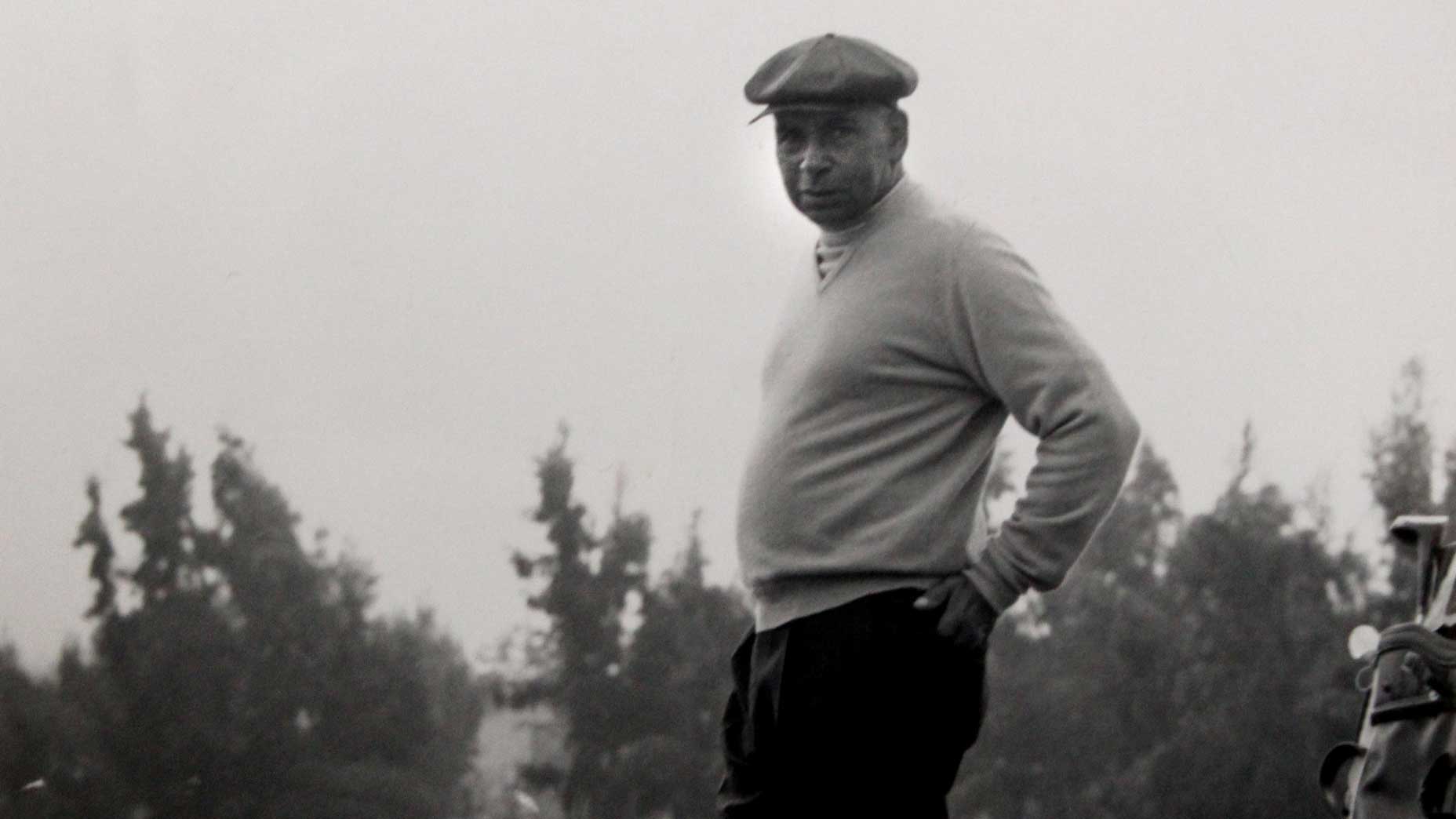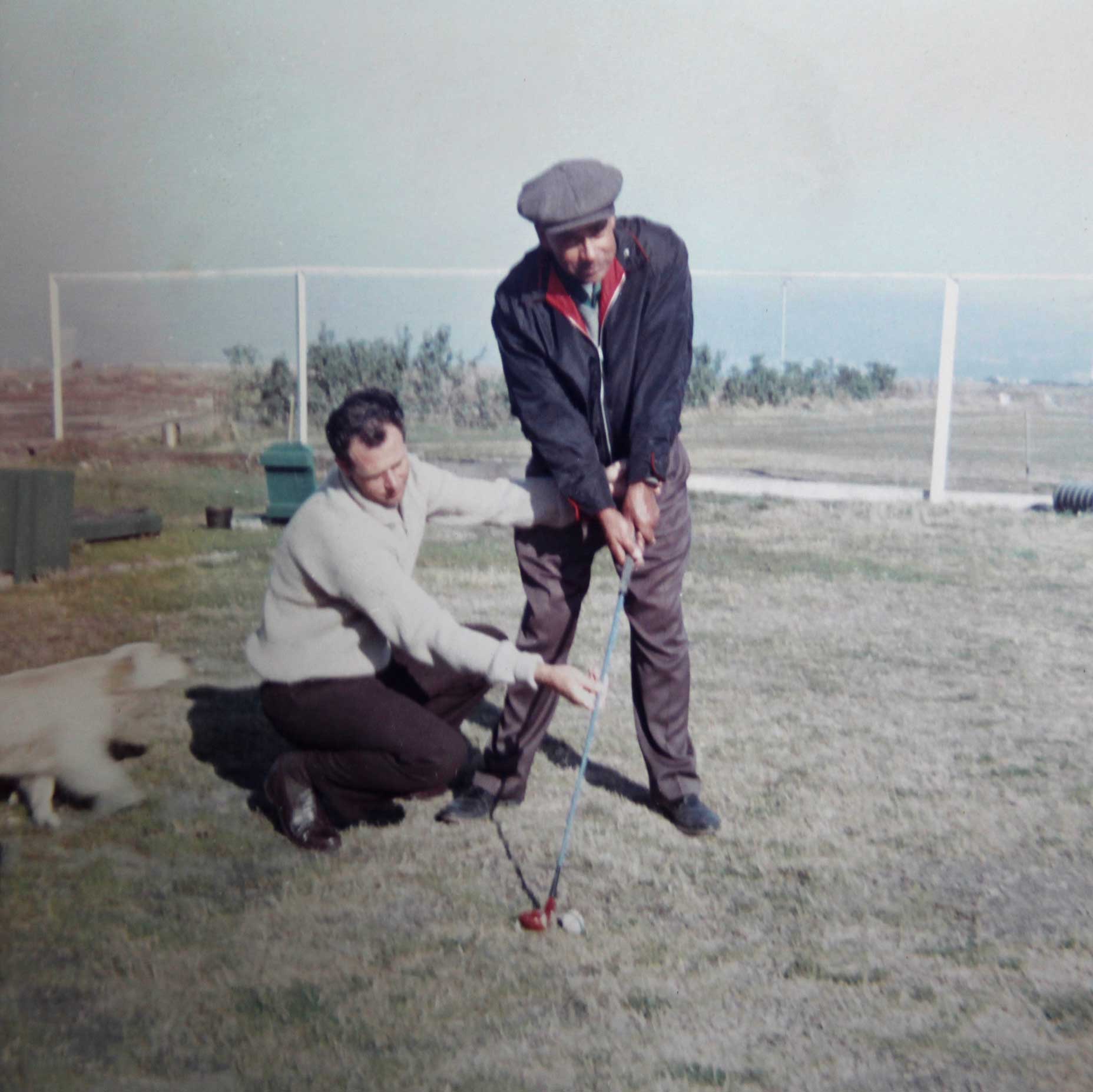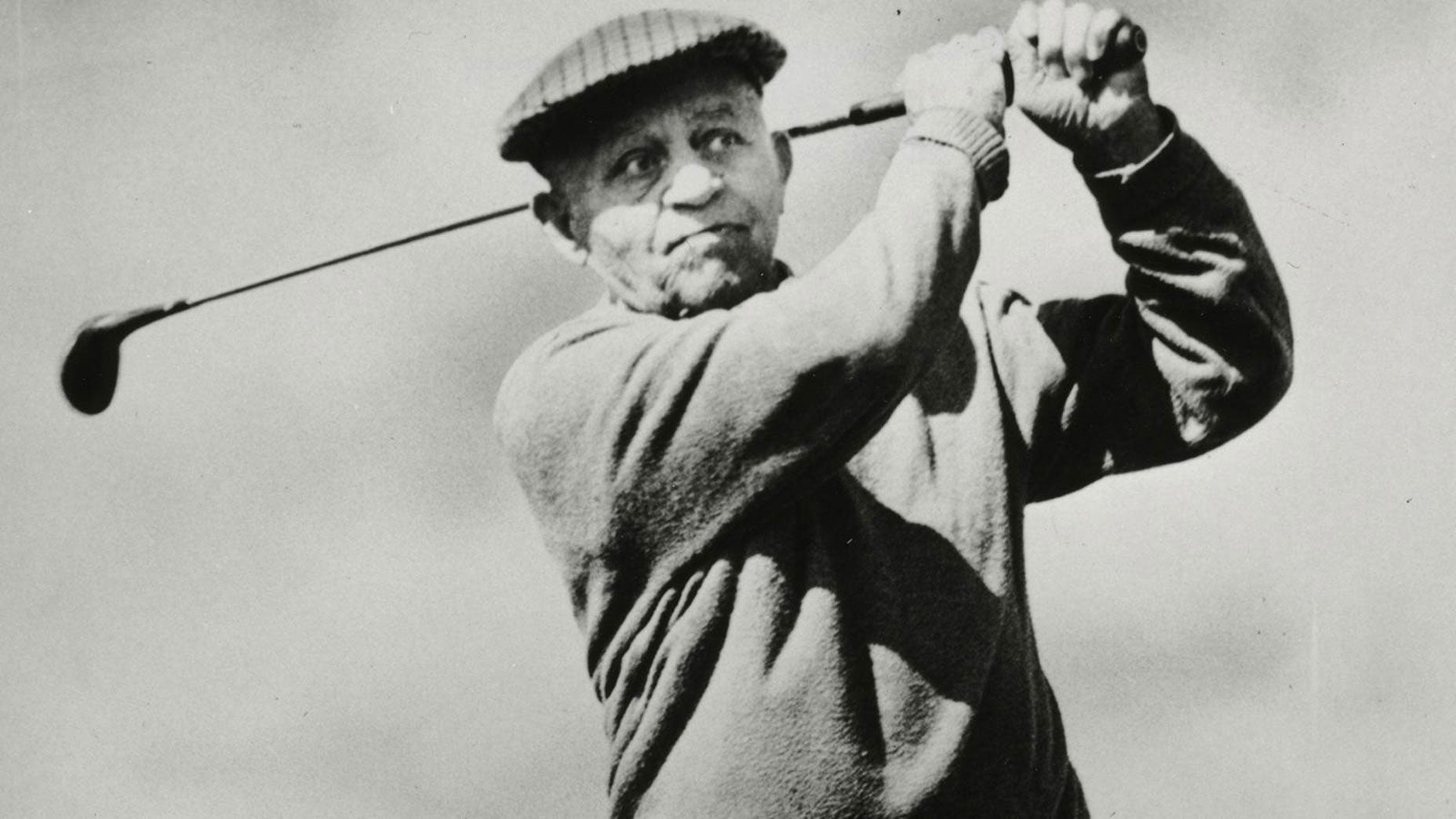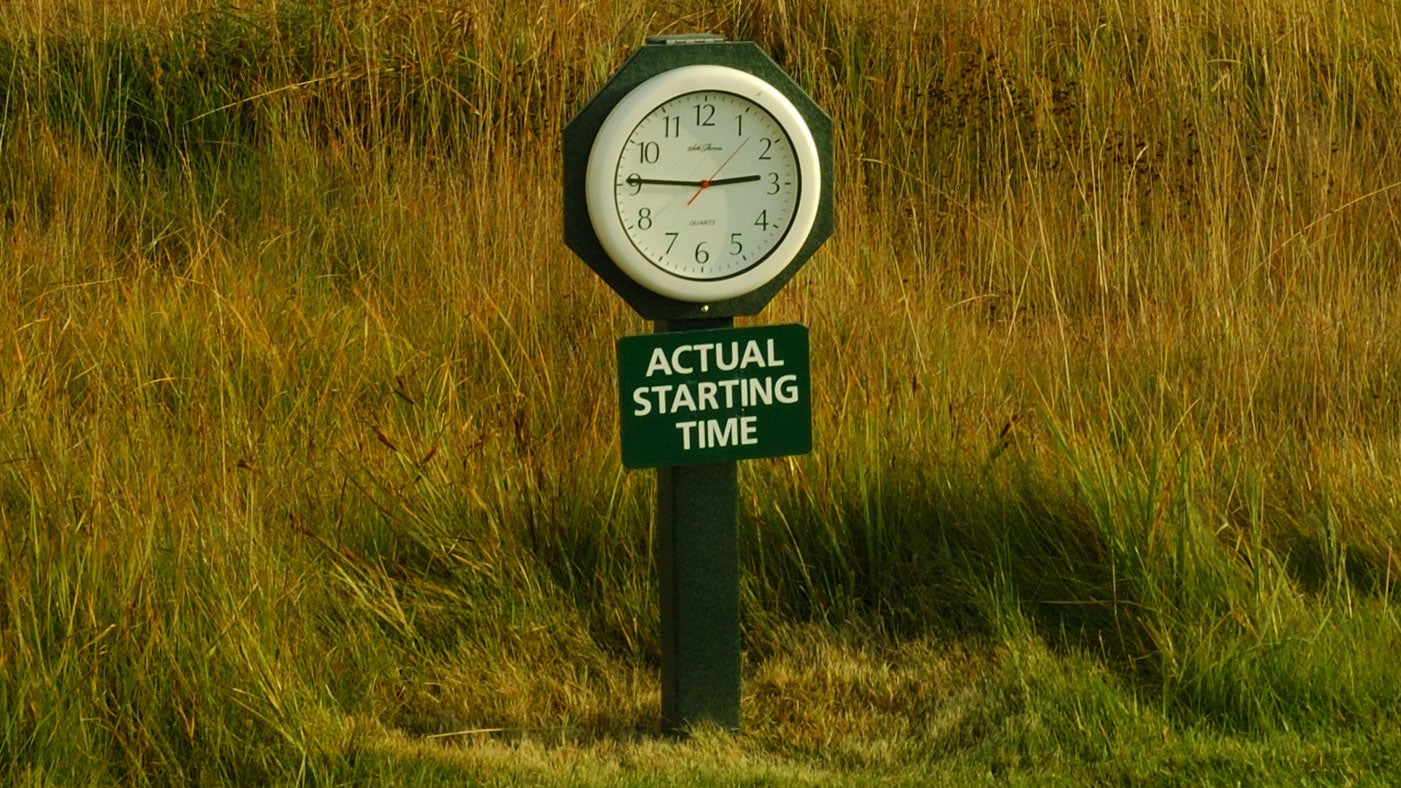He was barred from competing — so he taught a major champ instead

Lucious Bateman became a legendary figure around Bay-Area munis.
Lucious Bateman Foundation
In the late 1940s, a future British Open champion named Tony Lema started taking lessons.
His instructor? A man named Lucious Bateman.
Lema was a teenager and a live wire, one of four kids raised by a widowed mom in a modest home in Oakland, Calif.
Bateman was a soft-spoken transplant from the South who, in another era, might have been a champion himself.
This was a benighted time in golf, rife with color barriers. The PGA Tour had a Caucasian-only clause.
Bateman was the son of sharecroppers. Born in Louisiana, in 1906, he grew up in Biloxi, Miss. and learned the game while working at a local hotel and golf club, where he earned playing privileges and set a course record. He possessed, by all accounts, Tour-level talent. But as a Black man he was blocked from any prospects of competing for a living, so he took to teaching the game instead.
In Oakland, where he settled after serving in the Air Force during World War II, Bateman assumed a post at Airway Fairways, a bare-bones driving range across from the Oakland Airport, where a Hilton hotel stands today. Hired mostly as a handyman, he morphed into a full-time instructor, though what he taught extended beyond the swing.

To Lema, Bateman became a mentor and a father figure, a guiding light for a rambunctious boy who needed help following the straight and narrow. It was a role he filled for a lot of Lema’s peers.
“Many kids might have made jails instead of pars and birdies if it hadn’t been for Loosh,” Lema once said.
As with Kevin Bacon, you can play a lively game of six-degrees of Lucious Bateman. Along with Lema, his stable of juniors included John McMullen, John Whitt, and the brothers Dick and John Lotz, all of whom went on to win on Tour. Other Bateman students made their mark as club pros. Among them: Randy Hertzberg, an esteemed Bay Area instructor, and Gary Plato, a Northern California PGA Hall of Famer who taught the likes of Roger Maltbie and the LPGA stalwarts Dana Laughlin and Debbie Hall.
Around Northern California, Bateman’s most accomplished students became known as Bateman’s Boys. But his work was not restricted to a snug inner circle. His impact rippled outward. It endures today.
“He helped so many kids, not just with their golf but with life lessons, which they in turn have passed on,” says Plato, the former longtime head pro at San Jose Country Club. “He was like a one-man First Tee program.”
He taught adults, too. At $3.50 per session, Bateman’s schedule was stacked. But there was always room for kids, who got their lessons free. When youngsters dropped by the range, Bateman often paid them to shag balls. Invariably, he wound up sharing insights.
Like all the best instructors, he had a keen eye and a knack for communication. His philosophy was simple. He favored a short backswing, hands no higher than the shoulders at the top, and insisted on earnest effort.
“When I first met him, I would swing out of my shoes on every shot, trying to kill it,” says three-time Tour winner Dick Lotz, who along with his older brother, John, started picking balls at Airway Fairways in his early teens. “Lucious told me, Dick, you’re not old enough to swing the big swing. He’d send me to the putting green to chip and putt for three hours. The fact that I developed a pretty good short game, I owe that to him.”
Bateman, who never married and had no children of his own, lived with his sister in a home he bought for her on the avenues in Oakland’s outer reaches. He worked six days a week. On Fridays, he pegged it, often bringing students to play with him. Though many private clubs extended access to him, setting foot on segregated courses did not sit right with Bateman. He stuck to the munis. The place he played as frequently as any was the facility known today as Corica Park, on the island city of Alameda, neighboring Oakland.
After Bateman’s death, in 1972, the range at Corica was renamed in his honor, and a plaque installed to memorialize him. Now, another tribute at Corica is in store.
On Wednesday, in the pro shop beside the range, an exhibit devoted to Bateman will open, showcasing photos, awards and other memorabilia from his career. In life, Bateman never sought attention, but recognition found him, gathering force in more recent years. In 2008, the California Golf Writers Association bestowed him with Golden State Award, the organization’s highest honor. That same year, Bateman was also granted honorary membership into the Northern California PGA. He has since been inducted into both the National African American Golf Hall of Fame and the Northern California Golf Association Hall of Fame, among other shrines to the game.
Bateman’s life has inspired a documentary and a feature film, both of which are in the works. Though details of those projects are still under wraps, both are also sure to touch on Bateman’s ties to his most famous student, Lema, who died in a plane crash, in 1966, still in his playing prime.

Two years prior to his death, Lema won the British Open, at the Old Course in St. Andrews, five shots clear of runner-up Jack Nicklaus. On his return to California, one of Lema’s first stops with the Claret Jug was Airway Fairways.
His old teacher was at the range, as ever. So was Bateman’s student, Plato, who snapped what remains one of the few known photos of Bateman and Lema together. In the picture, which will hang in the exhibit at Corica, Bateman is in a golf stance, gripping a fairway wood with Lema crouched behind him in the role of instructor: a staged image that captures the truth of their connection in reverse.
With support from Corica Park, the Bateman is exhibited is being mounted by the Lucious Bateman Foundation, a non-profit that furthers the legacy of its namesake by supporting junior golf in Northern California.
This is part of our Muni Mondays series spotlighting stories from municipal courses.











